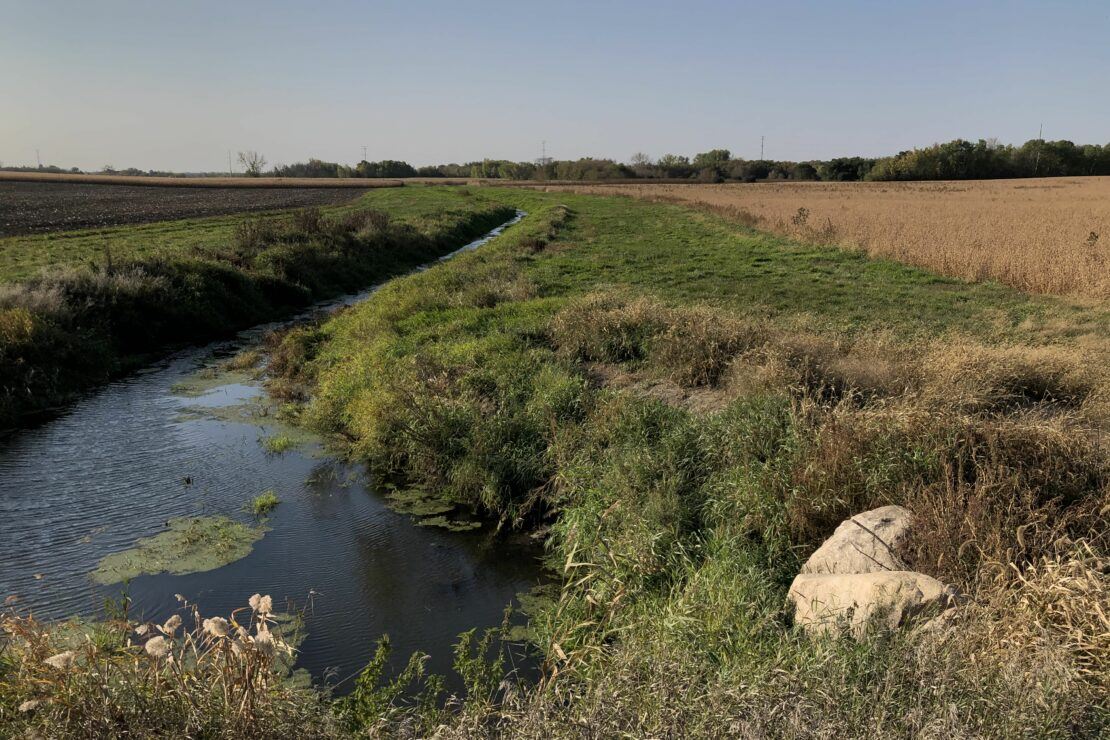For immediate release: Dairy farmers share early financial and environmental successes

Three Stearns County dairy farmers enroll in a project to measure the financial cost or benefit of new conservation practices
(Stearns County, Minn.) — Three Stearns County dairy farmers are featured in a new video about farm conservation and finances. Steve Schlangen, Tim Kerfeld, and Tom Gregory are experimenting with new practices to reduce the use of fertilizer, improve water quality, and increase soil health.
All three farmers are motivated to improve water quality and ensure that their land is better than they found it when they pass it on to their children. They are optimistic the new practices will get them there.
“I think conservation is important because we want our land to be here for the next generation,” shares Steve Schlangen. “We raise our family on this farm, and we want to make sure the water is safe to drink and that the water going downstream is as clean as possible. We try to do practices that improve all that.”
Tom Gregory also notes the how much the wildlife has changed since he started using conservation practices. “The wildlife is so abundant compared to when I started. We leave areas for them to nest, areas for them to feed. It shows.”
Buffer strips, cover crops, and manure stacking slabs at the farms are featured in the video. They continue to explore new ways to operate their farms with different practices and more data.
“If you’re not changing with the times, you’re sitting still,” says Tim Kerfeld. “And nowadays, you have to keep moving.”
For farmers new to conservation, they suggest testing out new practices on a small piece of land and talking with neighbors already employing these practices. Finding a specialist or farmer that you trust is the best way to learn about new practices and figure out what might work on your land.
All three farmers are part of a Return-on-Investment study led by the Headwaters Agriculture Sustainability Partnership to explore the connections between conservation practices and profitability. Each farmer has been working with instructors through the Farm Business Management program to analyze different costs and revenue for their farms. They also worked with Stearns County Soil and Water Conservation District to track the environmental benefits of the practices they use.
Next month, the study will release a report on the economic impacts of conservation practices. Early analysis of the data shows that the average and median net farm income of the participating farmers is higher than the average farmer in the region.
“I don’t see different types of conservation practices coming to an end,” says Steve Schlangen. “I think there are always ways that we can improve, and I think that as farmers we need to keep improving, not just to protect the environment but to protect our bottom line and stay in business.”
The Headwaters Agriculture Sustainability Partnership (HASP) is a cross-sector partnership, where no ideas are far-fetched. The partners are focused on agricultural conservation practices that can improve both a farmer’s profitability and natural resource stewardship. Created in 2018, HASP is a unique collaboration of public, private, and non-profit partners currently deploying solutions in Central Minnesota to benefit the environment, economic viability of farmers, and vitality of rural communities. Learn about the Headwaters Agriculture Sustainability Partnership, a partnership administered by Environmental Initiative, and the Return-on-Investment project.
Funding for the Return-on-Investment project comes from Compeer Financial, Edge Dairy Farmer Cooperative, Midwest Dairy, Minnesota Department of Agriculture AGRI Grant, Minnesota Department of Agriculture Dairy Business Planning Grant, and McKnight Foundation.